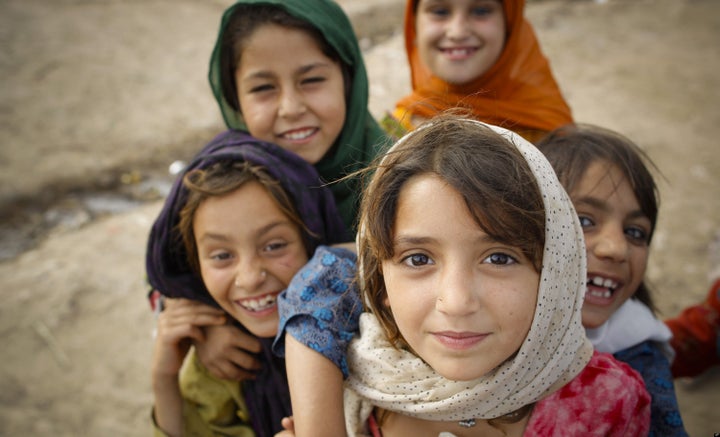
It's heartening to see philanthropists like Bill Gates and celebrities like Matt Damon raising awareness of the fact that more people in the world now have a mobile phone than have a toilet. As we celebrate International Women's Day on March 8, let's not forget that girls and women suffer the most from lack of sanitation. Every day, girls and women across the developing world rise early in search of the privacy that darkness provides.
When it comes to teenage girls, providing access to sanitation isn't just a matter of reducing rates of disease and infection. That by itself is important enough, but as it turns out, clean toilets keep girls in school, and keeping girls in school is vital not just for the girls themselves but for poor countries' economic development.
What happens in the girls' room, in other words, can transform entire societies.
Hard to believe? Let's follow the chain of events. When a girl in the developing world hits puberty, her school often lacks a private, girls-only space to wash, change and dispose of her sanitary pads -- or whatever make-shift materials she might be using.
So what happens? She stays at home during her periods. Her grades suffer as a result. She falls behind and in many cases drops out.
Fairness for girls would be reason enough to expand water and sanitation access, but research shows that when a girl stays in school, everybody benefits -- men, women and children alike -- in part because educated girls turn into empowered women, who invest more in their families, resulting in higher economic growth for the whole society.
We call this the "girl effect," and when it happens, it can deliver a knock-out blow to poverty.
This isn't empty theorizing, but based on years of experience, including my own work in Asia and Africa promoting innovation in the fight against poverty. In this short documentary, Snigdha, an eighth grader in rural Bangladesh who aspires to become a journalist, describes how her school once lacked a girls-only latrine. "There was only one latrine, but even this was broken and unhygienic. There was no water... We felt shame. It was an embarrassment," she tells the camera.
Sharkar, a teacher in the same school, says girls would often stay home during their periods. Many eventually stayed home for good, tipping the balance toward boys in classes that had begun with a healthy 50-50 mix. When a separate girls' bathroom was installed, attendance rates and test results both shot up.
Once the return on investment from girls' empowerment is properly understood, the case for toilets -- for girls' toilets especially -- is more convincing than ever. It's the reason BRAC, the world's largest development organization, is now working with thousands of public schools in Bangladesh to provide separate, clean and well-maintained facilities for girls. It's also why the Bill and Melinda Gates Foundation has led the way in funding new initiatives to expand access to water, sanitation and hygiene, including a campaign for "reinventing the toilet." Awareness is also on the rise thanks in part to Matt Damon's Water.org and the work of other celebrities like Edward Norton. The Huffington Post even started this very "Water" section to call attention to global water issues.
Identifying the links between education, poverty and sanitation is one step. Putting solutions into practice takes hard work and innovative thinking, and if the solutions aren't cost-effective and self-sustaining, they can too easily go the way of so many well-intentioned aid efforts, with money spent and little to show for it years down the road.
We need to see more efforts to involve the poor themselves as partners in innovation. I'm talking about people like Rushada Shahad, a "sanitation entrepreneur" who runs a makeshift "showroom" in her backyard in Bhaluka, a rural sub-district of Bangladesh. After training from BRAC, Rushada now runs a small toilet-making enterprise, where she and her three employees have manufactured concrete ring slabs for about 7,000 affordable latrines during her six years in business.
The sanitation entrepreneurs program is an example of the micro-franchised "business in a box" development strategy pioneered by BRAC in Bangladesh and deployed across other Asian and African countries. It has already produced eye-popping results, providing an estimated 25.5 million people with sanitation -- a number greater that the entire population of Australia. "We are working to eliminate open defecation in Bangladesh," says Babar Kabir, the head of BRAC's water, sanitation and hygiene program.
There are lot of people out there looking for simple solutions to complicated problems like global poverty. While there are no quick fixes, you could do worse than start with the site of the most basic of human functions, the humble toilet. And please, don't ignore what happens -- or needs to happen -- in the girls' room.